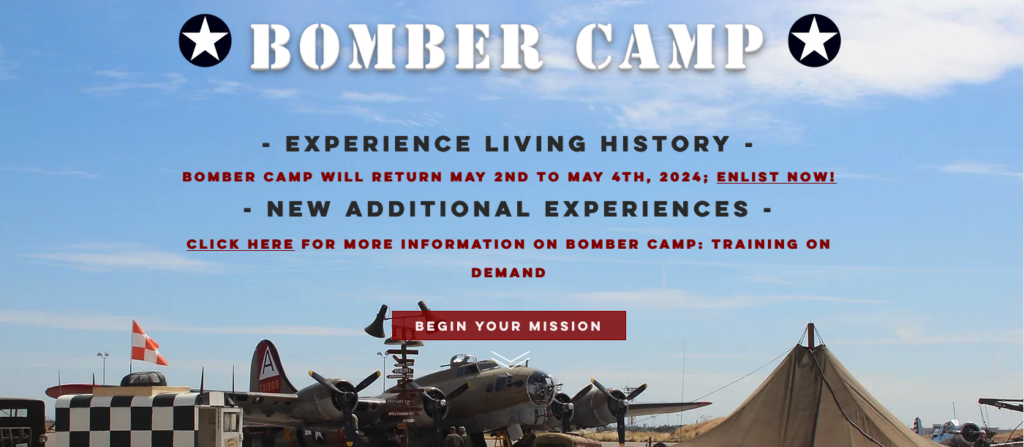By James Kightly
Thanks to well-known warbird expert Taigh Ramey, we can take you behind the scenes with the current Apple TV+ Masters of the Air series. Taigh gives us this insight into how Dave Littleton’s Boeing B-17 Flying Fortress replica cockpit section, along with his, and Taigh’s, expertise, was instrumental in the very accurate cockpit drills – one aspect of the series that is getting significant expert praise. Over to Taigh:
Dave is a lifelong W.W.II aviation enthusiast who has worked on a lot of other films in the past. He has a passion for the B-17 that goes back to his childhood. So much so that he has built a super accurate cockpit, from scratch over 20+ years, using a lot of original parts and equipment. The rest he made by hand. He brought his cockpit to the studio, and it was wonderful for sure.
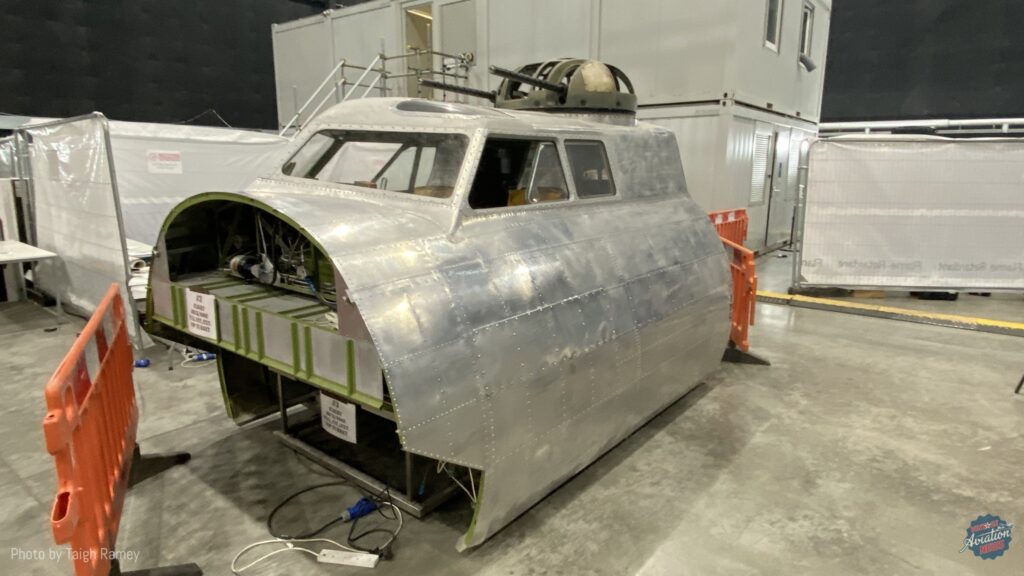
“Dave worked pre-production, hand in hand with BGI, the company that made a lot, if not most, of the B-17 props and the two full-size aircraft. He gave them the drawings, and photos and answered their questions. I think he was instrumental in the success of so many aspects of Masters of the Air.
“I was asked to come over to teach the aircrew how to look like they could pilot, navigate, drop bombs, shoot guns, radio work, etc., which ended up being a lot more than that. Dave let us use his cockpit for flight training and top turret gunner/engineer duties.
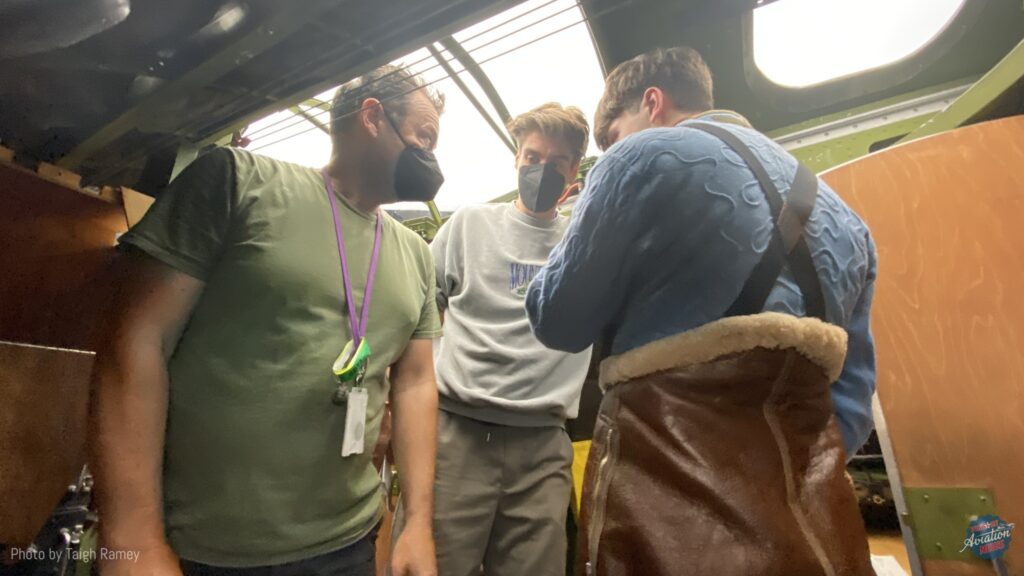
“The pilots and engineers went through initial training in Dave’s cockpit and then we would rehearse for the specific scenes.
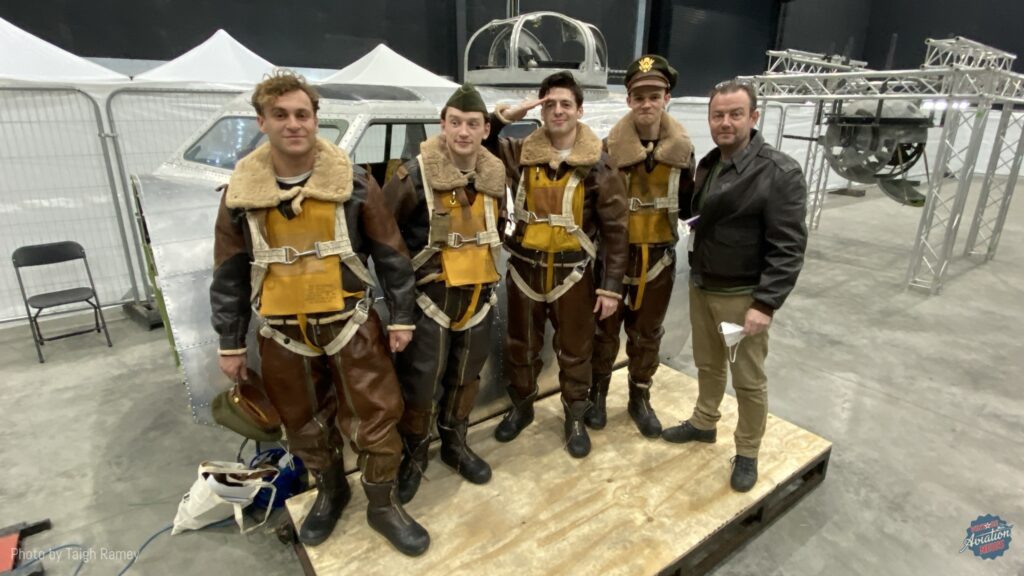
“I thought that some of the actors might have had some sort of prior knowledge of flying from gaming or flight simulators, but this was not the case. None of them had any concept of flying which was perfectly okay. I had to sit them down in a chair and teach them the very basics of the flight controls and how they are used. Grabbing an imaginary control wheel and had their feet on imaginary rudder pedals. Make sure they used the rudders first and then the aileron as you would in a heavy tail wheel aircraft.
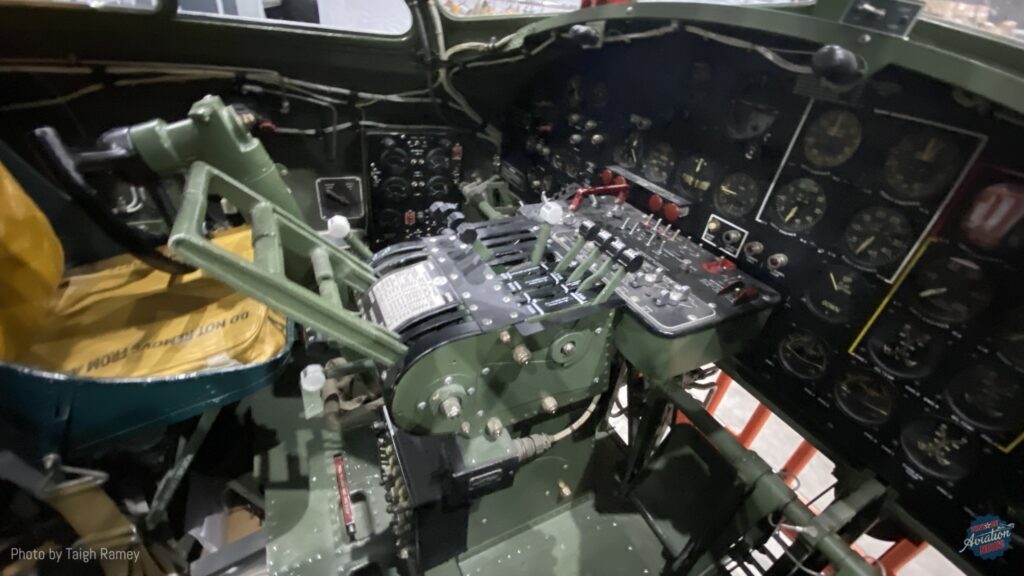
“We then progressed into Dave’s cockpit to teach them the myriad of engine controls and their basic function. Later when we had a specific scene, we would go through the procedures whether it be takeoff, landing, engine shutdown, etc. Just having them know where to look on the panel for power changes, checklist, formation flying, etc. worked out well. The ‘kids’ did a fantastic job and it shows in the episodes.
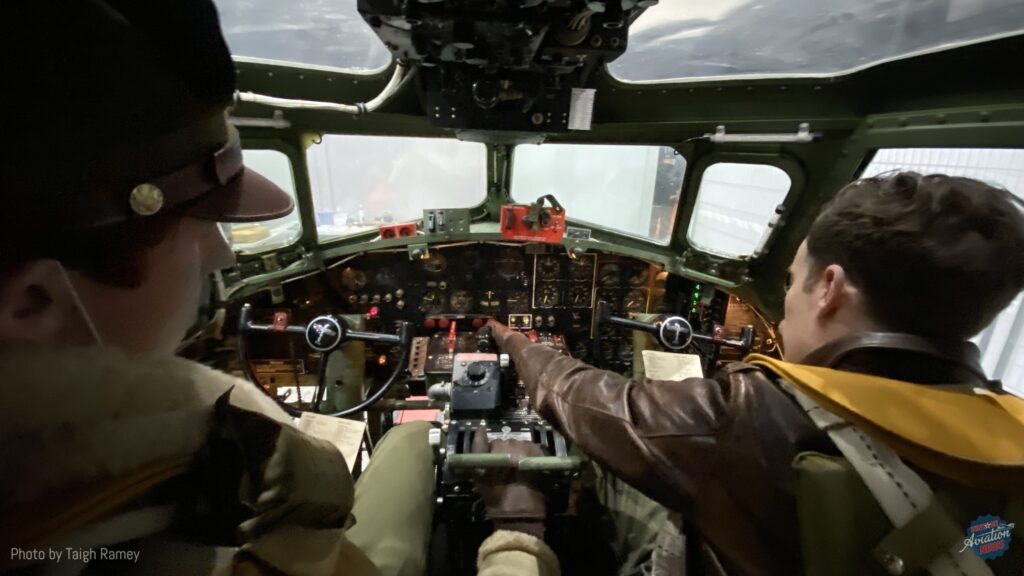
“The biggest item to try and get across to the actors was being a cohesive flight crew. Remember that the original guys had been flying together for a while and that was an important aspect of their training for the filming. There is nothing sweeter than flying with someone for a while where you get to know each other and anticipate what the other needs before he asks for it. We trained the pilot, copilot, and engineer together for takeoff so the pilot would be pushing the throttles with the copilot backing him up, doing the fine-tuning, and the engineer in between them doing his part too. The co-pilot or flight engineer reaching down for the prop controls during power changes as this would differ from one flight crew to another. Same with running the checklist as the engineer and even crew in the back are participating over the interphone. And these details made the final cut and it looked great. Okay, I may be biased…
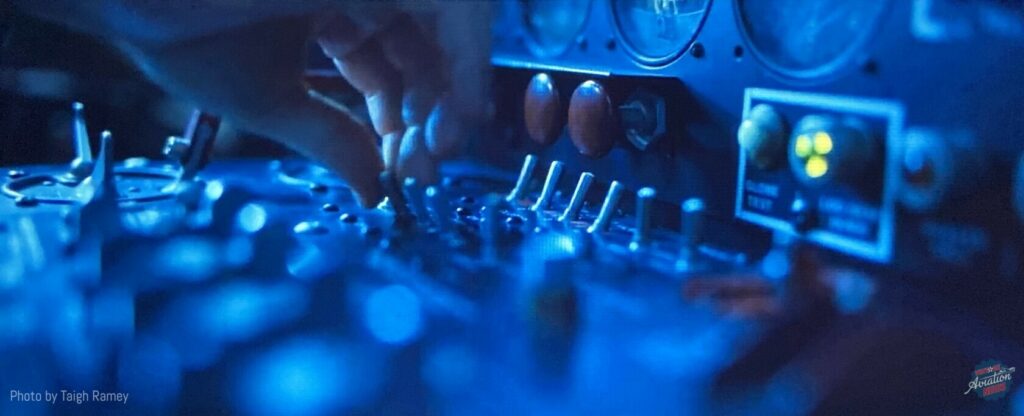
“Dave’s cockpit was so very helpful for the training because it was on the floor and was easily accessible. The main cockpit used for filming was on a gimbal 20 feet in the air! With Dave’s cockpit, I could lean in from a side window and instruct with all three crew in place. The various directors could also come up to each side and see and direct how they wanted the scene to go. It would give them ideas on camera angles to set up.
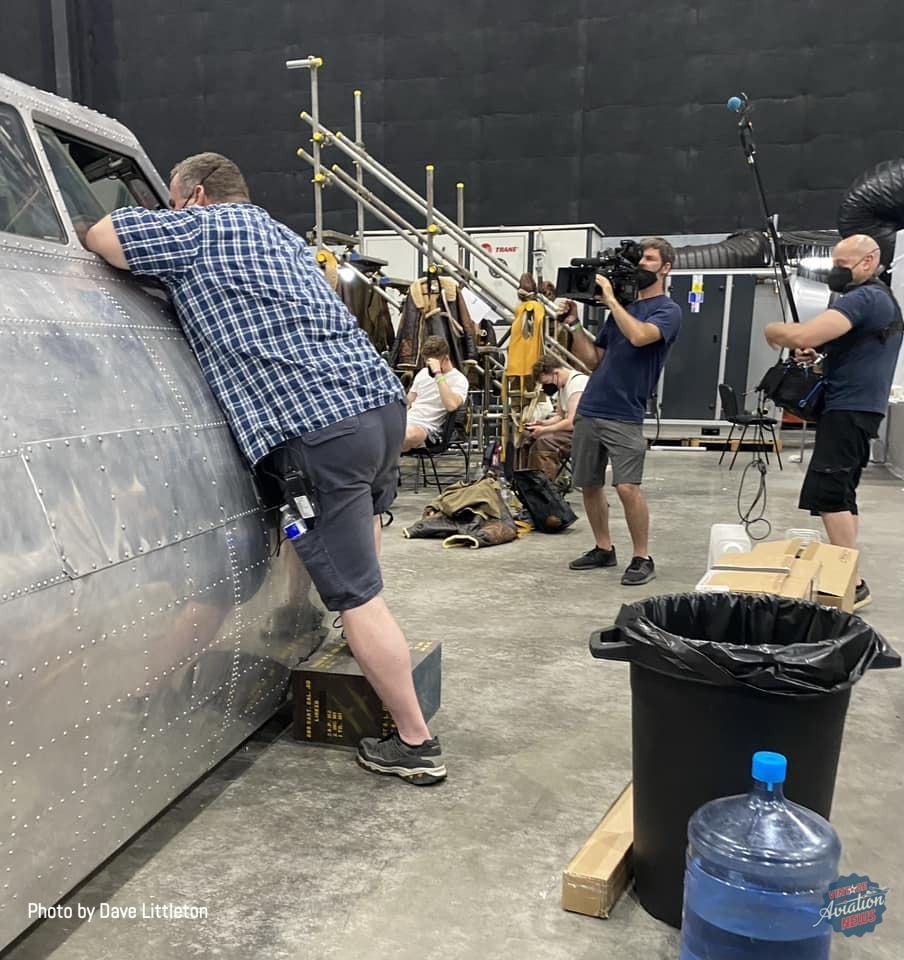
“The other aspect of Dave’s wonderful cockpit was its authenticity and detail. He used so many original parts that it is as accurate as could possibly be. Dave wanted it used as much as possible but frankly was a bit shy about this. Not having ever been known for being shy, I really wanted it used for as many close-ups as possible and pushed for this.
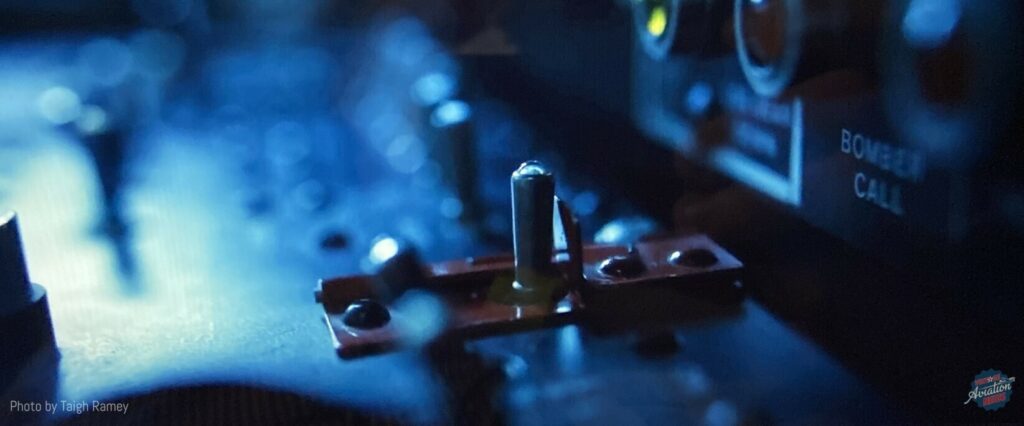
“As a result, you can see Dave’s awesome detailed handiwork in Masters of the Air, especially in the close-up scenes showing the magneto switches, electrical, primer use and so much more.
All close-up cockpit shots you can see in this scene use Dave Littleton’s B-17 Cockpit Project.
“Dave and I were basically the only two on set who had extensive knowledge of W.W.II aviation and B-17 information. We were constantly being asked questions and were helping lots of different departments. He and I split up the advising since several units were filming at the same time.
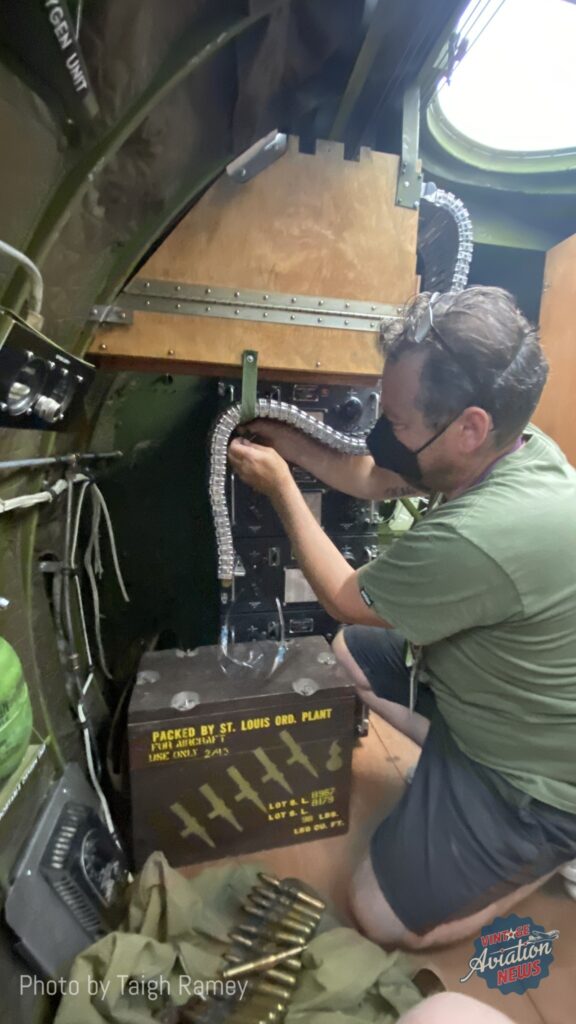
“We were both out in the field to start mostly at Abingdon where the full-size BGI aircraft were. When the volume or studio started ramping up, I stayed there training and rehearsing while Dave continued the fieldwork. We were trying our best to keep things realistic and authentic, but we were spread really thin.
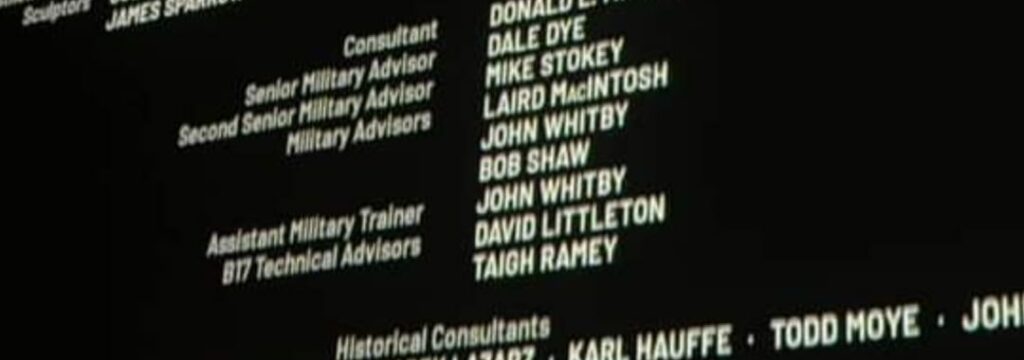
“Dave took off a lot of time from his day job to do this project, as did I, but with the production overruns, COVID, etc. he had to go back to work and sadly missed the last few months of filming. We sure missed Dave, especially out in the field, although he was always available by phone and still helped out as much as he could.
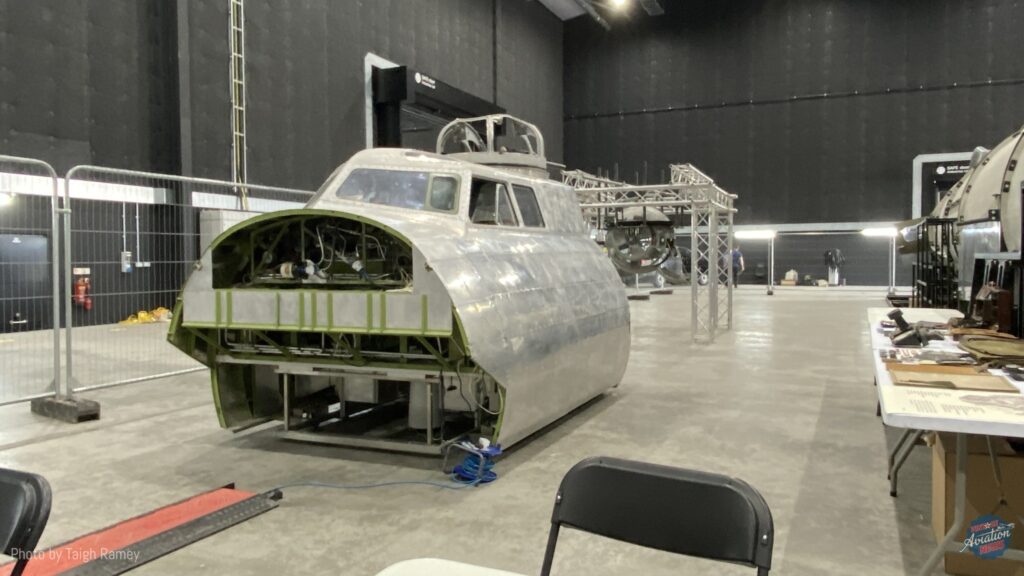
“It was great to work with you Dave and learn from you! Your cockpit really helped out in so many ways and your personal contributions were more than invaluable. You were, and are, a Master of the Air master in my eyes for sure!
Vintage Aviation News would like to thank Taigh Ramey (and Dave Littleton) for being able to see ‘behind the scenes’ of Masters of the Air. we have more to share from Taigh, but you can also experience his expertise ‘hands-on’ at this year’s Bomber Camp , details are below:
, details are below:
Would you like to get a LOT closer to experiencing flying your mission in a legendary B-17 Flying Fortress? Young or old, you can live your dream at Bomber Camp ! Bomber Camp
! Bomber Camp was devised by this article’s author, Taigh Ramey, the founder of the Stockton Field Aviation Museum and avid WWII collector and history buff. Bomber Camp
was devised by this article’s author, Taigh Ramey, the founder of the Stockton Field Aviation Museum and avid WWII collector and history buff. Bomber Camp is much more than a “fantasy camp”. It is an immersive WWII living history experience allowing you to step back in time to train for a bombing mission and then to fly it, for real.
You can shoot the guns, ride in the ball turret, and drop a bomb with the famous Norden bombsight. This once-in-a-lifetime opportunity can be yours. Enlist now! www.bombercamp.org.
is much more than a “fantasy camp”. It is an immersive WWII living history experience allowing you to step back in time to train for a bombing mission and then to fly it, for real.
You can shoot the guns, ride in the ball turret, and drop a bomb with the famous Norden bombsight. This once-in-a-lifetime opportunity can be yours. Enlist now! www.bombercamp.org.
